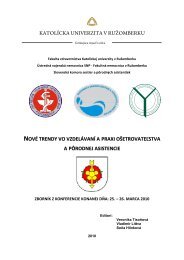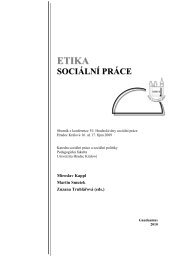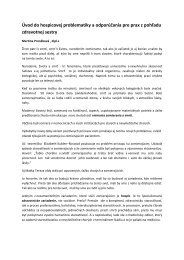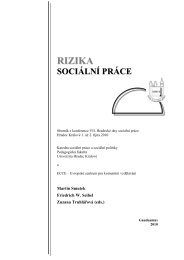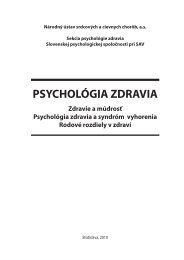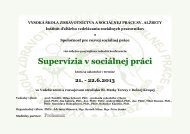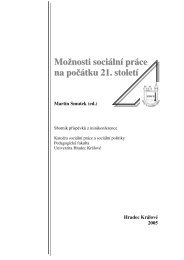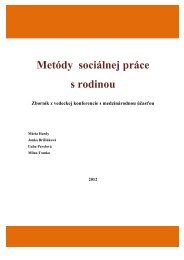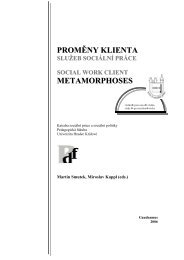Zmena klÃmy â možný dopad (nielen) na obyvateľstvo - Prohuman
Zmena klÃmy â možný dopad (nielen) na obyvateľstvo - Prohuman
Zmena klÃmy â možný dopad (nielen) na obyvateľstvo - Prohuman
Create successful ePaper yourself
Turn your PDF publications into a flip-book with our unique Google optimized e-Paper software.
many pathways. Like AIDS, CC is increasingly recognised as likely to impair gover<strong>na</strong>nce<br />
and development on local, <strong>na</strong>tio<strong>na</strong>l and regio<strong>na</strong>l scales.<br />
The AIDS epidemic and CC share three other similarities. First is the lag between<br />
impact and infection or in the case of HIV, initiation, and an ecological dimension.<br />
The delay between HIV acquisition and diagnosis has served to obscure individual<br />
and community recognition of the infectious <strong>na</strong>ture of the disease and to foster<br />
community confusion and denial. Similarly, the decades-long gap between the<br />
recognition that the atmospheric concentration of GHG was altering and the evidence<br />
for significant climatic change caused widespread uncertainty, and also<br />
contributed to the powerful forces which deny the reality of CC, and which attempt<br />
to discredit its proponents. Secondly, the HIV epidemic has important inter-generatio<strong>na</strong>l<br />
social consequences. In some cases the population pyramids of<br />
<strong>na</strong>tions have been altered, with far-reaching consequences.<br />
Hundreds of thousands, or even millions of orphans have been raised by their<br />
grandparents, people in turn whose own children died mainly of AIDS. If these orphans<br />
go on to acquire HIV then the supply of future grandparents will be much diminished,<br />
with uncertain but likely adverse consequences for the human capital as<br />
the upcoming generation will have an insufficient social security network to rely on.<br />
Antibiotic Resistance and its Impact on Persons Living With HIV/AIDS<br />
For more than half a century, antibiotic drugs have ensured that potentially<br />
life-threatening bacterial infections are treatable. Today, however, more and more<br />
bacterial infections fail to respond to antibiotic treatment. A federal task force<br />
recently warned that antibiotic resistance is “a growing me<strong>na</strong>ce to all people” and<br />
concluded that if nothing is done, treatments for common infections will become<br />
“increasingly limited and expensive-and, in some cases, non-existent.” Antibiotic<br />
resistance poses a threat to everyone, but people living with HIV/AIDS are at particular<br />
risk.<br />
HIV is a viral rather than bacterial disease, so antibiotics cannot be used to treat<br />
it directly. But because the virus disrupts the body’s own disease-fighting immune<br />
system, antibiotics critical for treating patients infected with HIV. In addition,<br />
many of the therapies used to treat HIV suppress the body’s own infection-fighting<br />
white blood cells. In those persons who do not receive effective treatment<br />
for the HIV virus, the virus generally leads to Acquired Immunodeficiency Syndrome<br />
(AIDS). AIDS is a fatal disease characterized by numerous bacterial, viral<br />
and fungal infections, certain cancers, nutritio<strong>na</strong>l wasting and/or deterioration<br />
54





